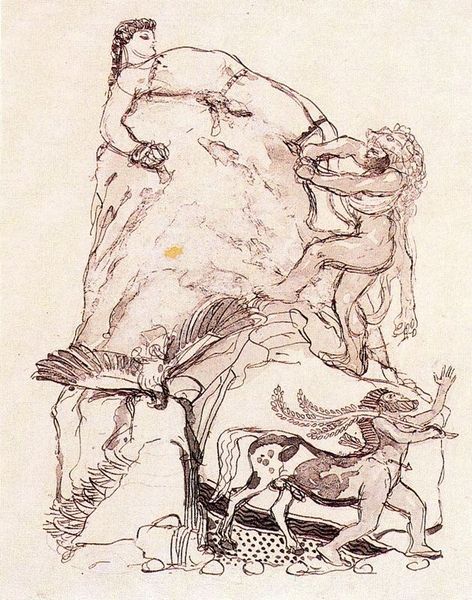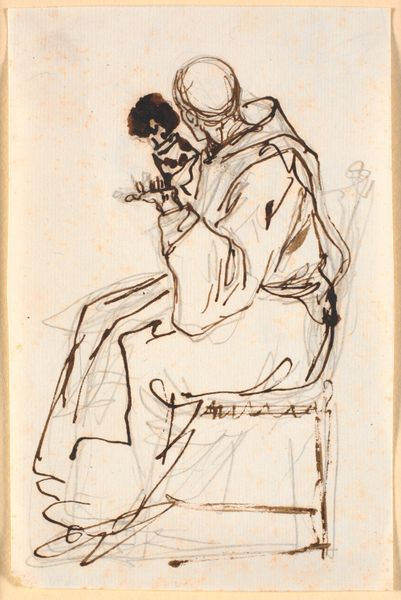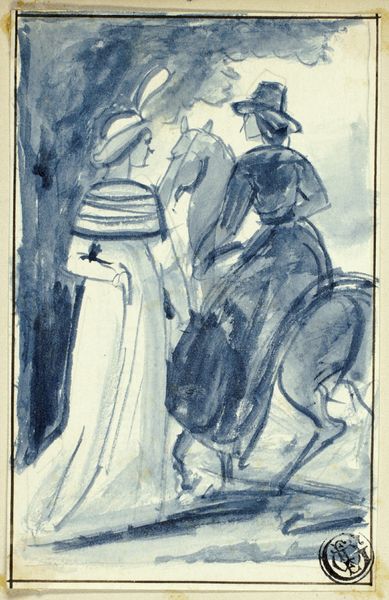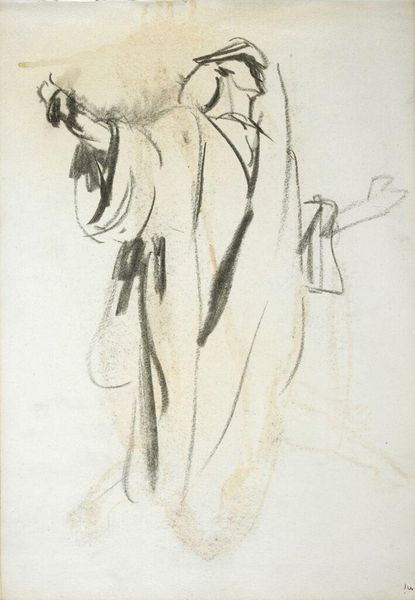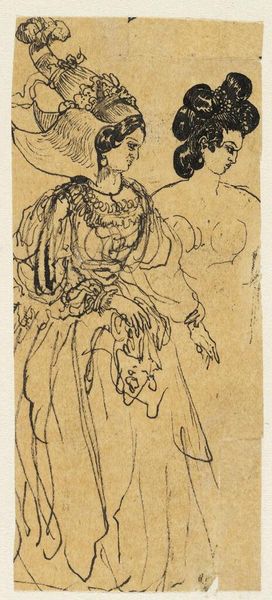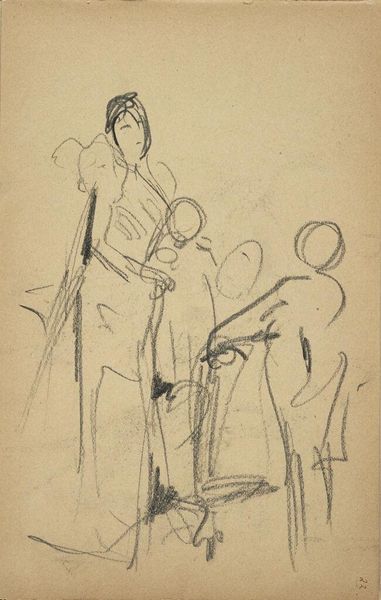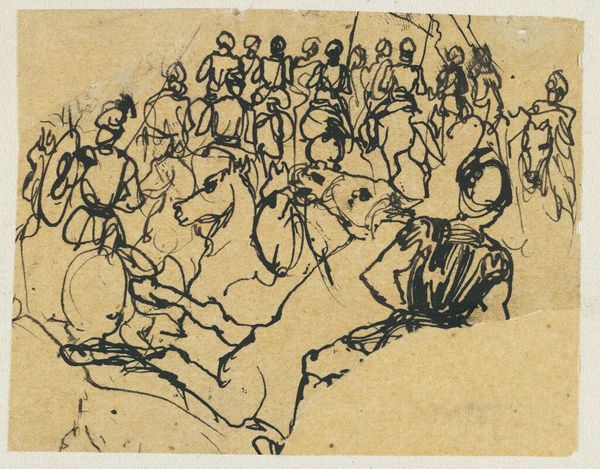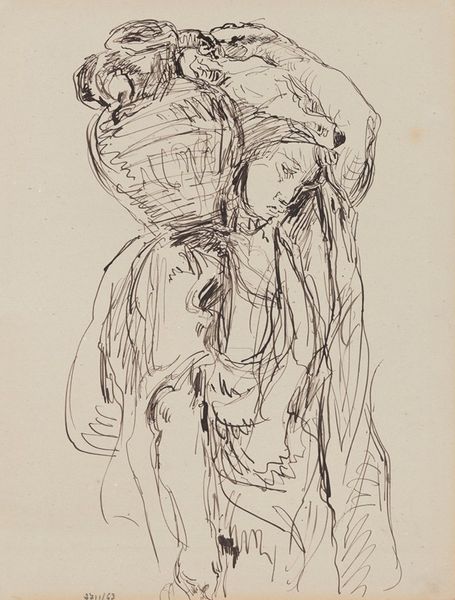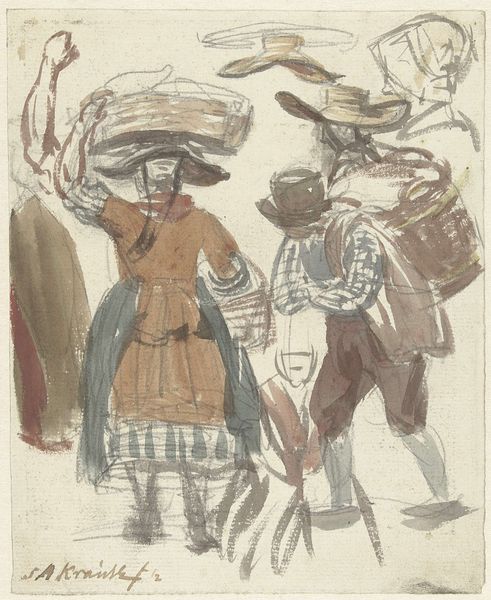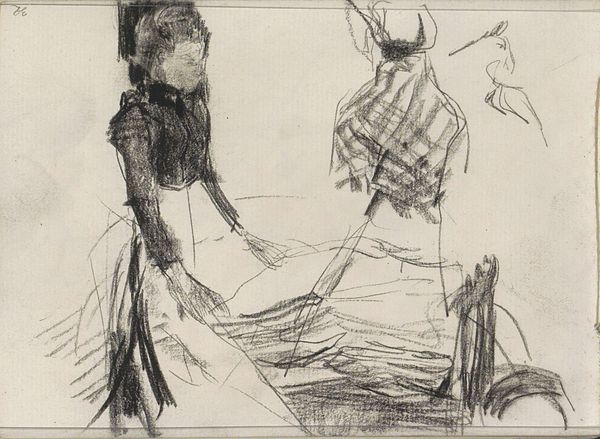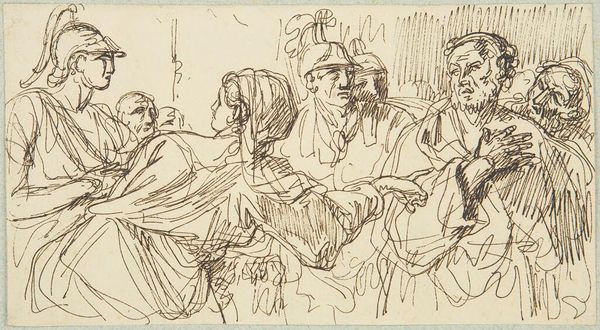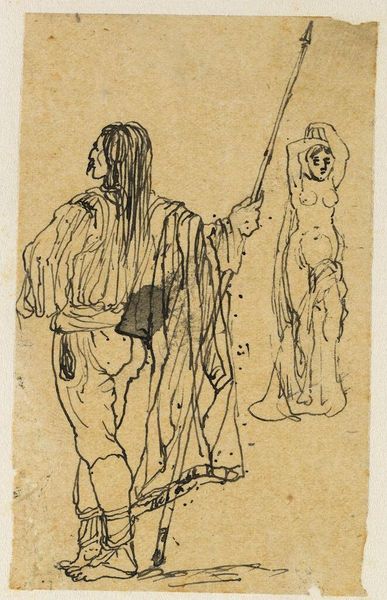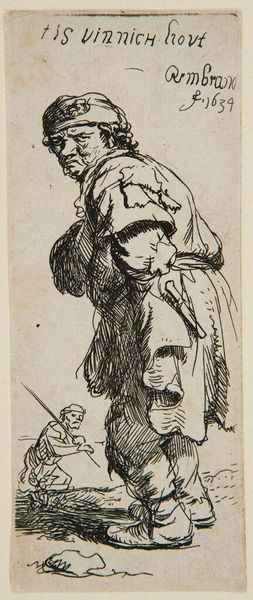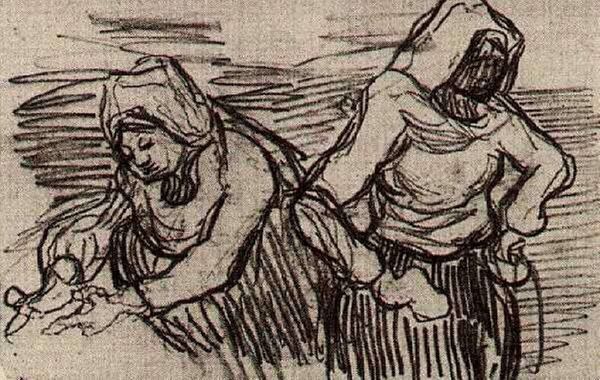
drawing, ink, pen
#
drawing
#
pen drawing
#
pen sketch
#
landscape
#
ink
#
sketch
#
pen-ink sketch
#
costume
#
pen work
#
symbolism
#
sketchbook drawing
#
pen
Copyright: Public domain
Curator: Konstantin Korovin created this drawing, "Rider in a Religious Procession," in 1908 using ink and pen. What strikes you first? Editor: The looseness, the sheer fluidity of the line. It feels like a fleeting impression, almost like capturing movement itself. Curator: Absolutely, it possesses an ephemeral quality. Korovin evokes a sense of ceremonial display, but through a veil. There’s a richness of historical costuming depicted; do you see any recognizable cultural symbolism? Editor: The layered textiles and tassels certainly suggest ritual attire. The horse’s ornamentation is particularly fascinating, hinting at an elevated status and the power imbued within the procession. However, the hasty line work gives it the air of a sketch, as though remembering the costume for a performance of some kind. Curator: Yes, its gestural nature pulls the viewer in many directions. And symbolism of color is present. We are reminded that white in these traditions is for funerals, purity and even royal garments, or religious initiates. It could tell us something more. How would you describe its composition? Editor: The rider and horse are centered, commanding attention, yet the surrounding space dissolves. It focuses us on a central motif; a symbolic act—almost allegorical. We are placed in a space to contemplate this event—observing, almost watching this spectacle pass us by. Curator: The composition indeed channels this event, focusing on the act, not those being acted upon. Do you believe that impacts the drawing psychologically? Editor: In a way. The incompleteness and lack of hard lines evokes a feeling of something unfulfilled, yet deeply embedded in tradition and meaning. Curator: What resonates most is the incomplete nature, it is the memory that lasts, never fully complete, or ever forgotten. What are your final thoughts on the work itself? Editor: It's a study in capturing energy and presence, in memorializing the past through gesture. Curator: Yes, a reminder that rituals are not merely actions but vessels of memory, echoing through time.
Comments
No comments
Be the first to comment and join the conversation on the ultimate creative platform.
